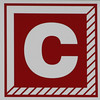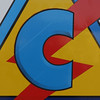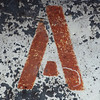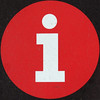The creation of knowledge through conversation is the core of liberal arts education.
Presenter: Ruben R. Puentedura
The creation of knowledge through conversation is the core of liberal arts education.
According to research from the past 5-10 years, blended learning (face-to-face + online) is becoming more relevant and necessary on residential campuses. These studies show that truly blended courses where the face-to-face and online components are comparable in magnitude will fix some of the problems with both face-to-face and online courses.
Face-to-face learning is good for:
- establishing a local presence
- discursive task definition
- generation of ideas
Online learning is good for:
- sustaining social presence
- discursive task execution
- evaluation & development of ideas
[side note: I am seeing truth in the above thanks to online social networks like Twitter, Facebook, and the Library Society of the World, which are responsible for both sustaining and growing the connections I make at conferences.]
Prior to the development of the tools and technology that led to Web 2.0, we did not have the ability to see bi-directional conversations on the Web. Web 2.0 has re-defined the Web as a platform for small pieces, loosely joined. The Web 2.0 is the architecture of participating, with remixable data sources and data transformations, harnessing collective intelligence.
Conversations as continuous partial attention
Twitter is both asynchronous and synchronous at the same time. Conversations can be both instantaneous and over time, and there are no expectations that you will read every single update from everyone you follow.
Conversations surrounding production/consumption
Flickr has taken the static image on a website and enhanced it with conversational elements like comments, groupings, tags, and notes on photos. Partially because the content is self-produced, this has created a supportive community and a culture of intolerance for troll-like behavior. In contrast, YouTube, which offers similar features for moving images, is filled with content not created by the sharer, and the community is unfriendly compared to Flickr.
Ustream contains user-generated live streaming video, and should have a culture of users similar to Flickr; however, it appears to lean more towards the YouTube culture. Swivel is a site for sharing data and creating visualizations from that data, and it straddles the line between a supportive culture and one that is prone to troll-like behavior.
All of this is to say that if you choose to use these tools in your classroom, you need to be aware of the baggage that comes with them.
Conversations mapping the terrain
del.icio.us is a social bookmarking service that can be an information discovery tool as well as a conversation. The process of adding a new bookmark tells you something about the URL by showing how others have added it (leaning on the expertise of other). The network of users and tags can show connections outside of defined groups.
Conversations based on shared creation
Most blogs include comment functionality which allows readers to participate on equal footing. Trackbacks show links from other locations, branching out the conversation beyond the boundaries of the solitary blog. The blog has also cause the rediscovery of forms of discourse such as the exploratory essay, epistolary conversation, and public scholarly societies (scholarly societies that are visible and present in the public eye as authorities on subjects).
Wikis provide a forum for discussion with a historical archive of past conversations. Through the interaction between scholars and non-scholars on wikis such as Wikipedia, the articles become better, more comprehensible explorations of topics. A student project using wikis could be one in which they create a scholarly essay that for a topic lacking such on Wikipedia and submit it, thus gaining the experience of creating scholarship in the public eye and contributing to the greater good of the whole.
SIMILE Timeline is another tool for creating content relevant to a course that provides a forum for discussion.
Conversations about conversations
Ning allows you to create a social network with tools like those on MySpace or Facebook but without the culture and baggage. You can do similar things in traditional academic tools such as course management software, but Ning is more attractive and functional.
What’s next? Puentedura suggests the SAMR model. As we move from substitution to augmentation to modification to redefinition in the way we use technology and tools in the classroom, we move from basic enhancement with little buy-in or value to a complete transformation of the learning process that is a true academic conversation between the student and the professor.
Resources:
The Horizon Report
ELI: 7 Things You Should Know About…
50 Web 2.0 Ways to Tell a Story


















